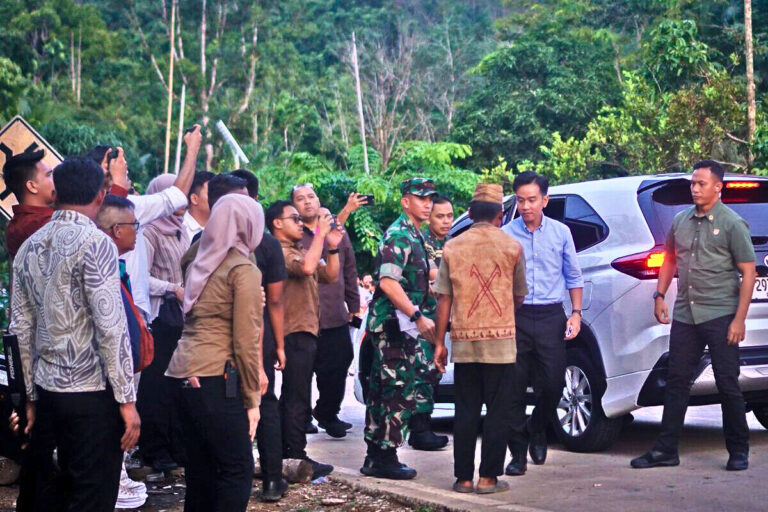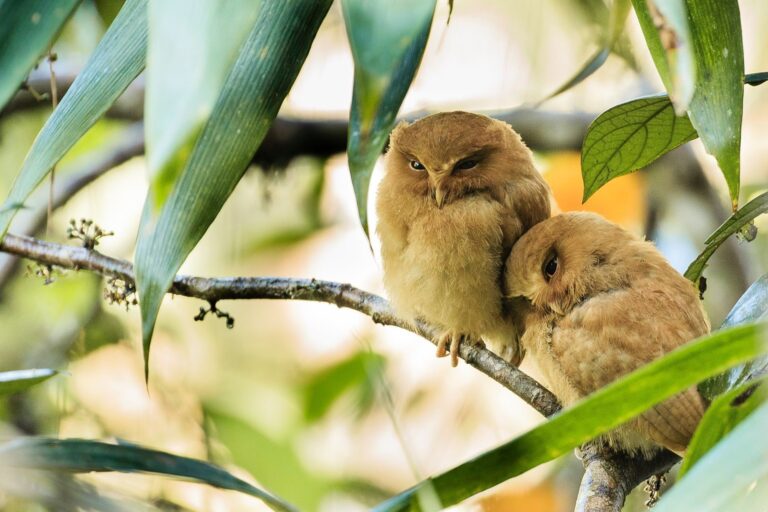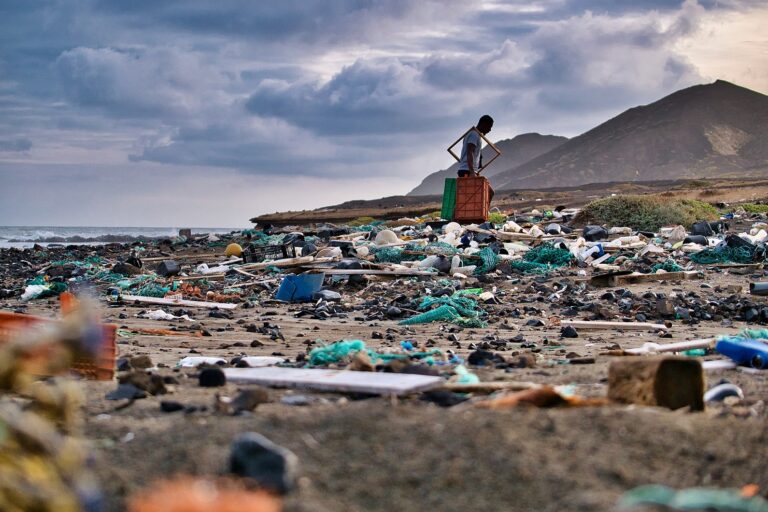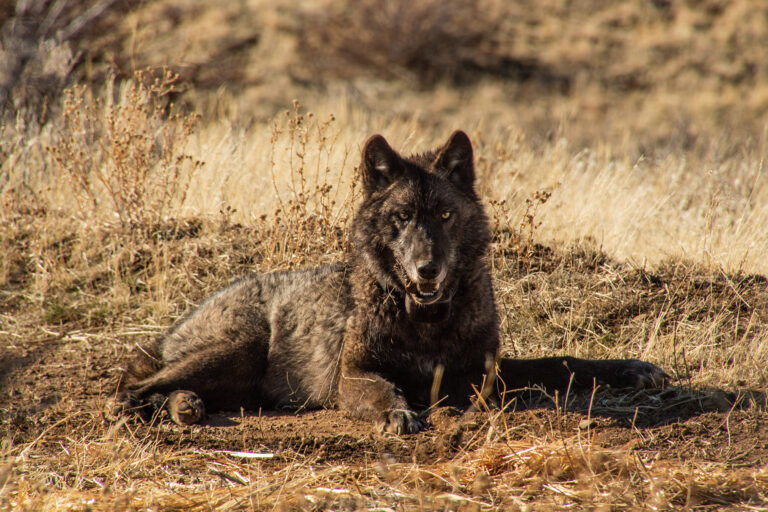- An intelligence-gathering investigation by Earth League International and the Dutch national committee to the IUCN has revealed that Chinese-controlled trafficking syndicates are responsible for smuggling jaguar body parts out of Bolivia.
- These groups hide behind legitimate businesses like restaurants and shops, which also serve as fronts for the transit of other wildlife and illegal drugs, the investigation found.
- An influx of Chinese investment into infrastructure projects in Bolivia in recent years has coincided with a rise in poaching, with traffickers targeting jaguars as a replacement for nearly depleted tiger populations back in Asia.
- Some Bolivian officials are pushing for legal reforms that will impose heavier sentences for wildlife, but the country’s political crises has held up those efforts for now.
“How to pass the custom?”
“You need to bribe someone. We do not bribe the custom, but the police officer, with higher level…”
“By container?”
“Yes. Possible.”
“Have you tried?”
“[…] I just send it to Brazil, there are more trading companies there. You can easily smuggle it to Brazil or Peru.”
This is the transcript of a conversation, translated from Chinese, between an undercover investigator and a trafficker of jaguar body parts, excerpted from hundreds of hours of footage collected between 2018 and 2020 in Bolivia.
The investigators, from the anti-trafficking group Earth League International (ELI) and the Dutch national committee to the IUCN (IUCN NL), sought to expose one of the least-known links in the trafficking chain of this iconic big cat: members of the Chinese community in Bolivia who, it was believed, would be more forthcoming with fellow Chinese speakers than with the local authorities investigating them.
With the language barrier out of the way, ELI’s undercover Chinese investigators were able to uncover important information about these traffickers: how they cluster, where they operate, and what routes they use to export the jaguar parts to Asia. “Jaguar trafficking is not just a conservation problem, but an organized crime,” says Andrea Crosta, ELI’s CEO and co-founder.

This investigation identifies at least three such criminal groups operating in Bolivia and composed almost entirely of resident Chinese nationals. The groups are concentrated in the departments of Santa Cruz and Beni, specifically in the municipalities of San Borja, Rurrenabaque and Riberalta. The preferred means of transport is by plane, either on commercial flights or cargo shipment. The method depends on the quantity being transported and, in many cases, involves a bribe to a local authority.
While these are age-old methods of wildlife trafficking, what is new is that the jaguar trafficking is taking place in new areas. Investigators found jaguar meat on sale in at least two restaurants in Santa Cruz, in a brazen double violation: it has long been a crime to kill jaguars in Bolivia, and since April 2020 it has also been illegal to consume any kind of wildlife. The investigation raises concerns about what is happening in Bolivia, and whether collaborative efforts can help combat jaguar trafficking.
Traffickers’ modus operandi and transport routes
To meet with a seller of jaguar parts in Bolivia you need to follow several steps and pass some tests. The initial contact is usually made through WeChat, the most popular mobile messaging among Chinese users both inside the country and abroad. After an in-person follow-up meeting has been secured, sellers only show a small part of their merchandise. “Sellers do not carry a lot of goods with them in plain sight or in places of immediate access,” the ELI report says.
After a rather noisy start, advertising has become more discreet in recent years. Up until 2017, a local radio station in San Borja, Beni, constantly broadcast an ad offering to buy “tiger fangs preferably large and clean.” (The Chinese expression for “jaguar,” 美洲虎 (měizhōu hǔ), literally means “American tiger.”) In 2014, printed ads seeking jaguar parts were also commonly circulated in rural areas. The current radio silence may also partly explain why there have been no new seizures of jaguar parts since January 2019, as reported by Mongabay Latam.
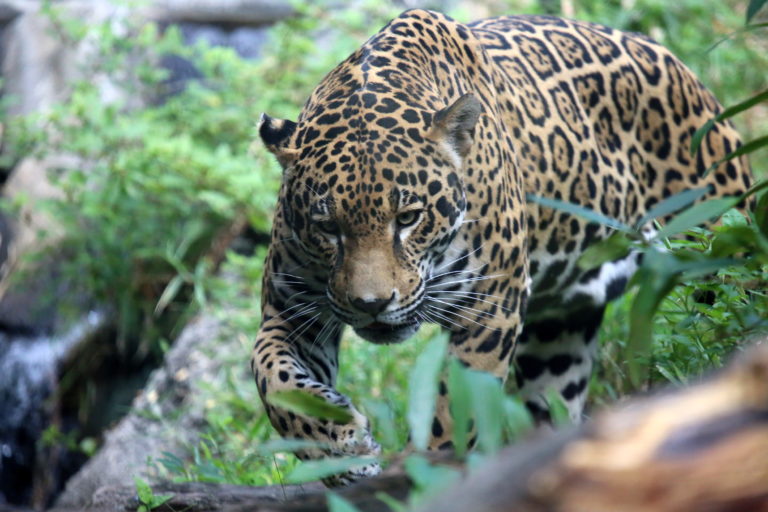
“We have signs of the presence of international criminal organizations,” says Rodrigo Herrera, a legal adviser to the Bolivian environment ministry’s office for biodiversity and protected areas.
ELI’s findings, which it has shared with the Bolivian authorities, identify through names and photos the members of at least three criminal groups involved in jaguar trafficking.
One of these gangs, known as Putian, is thought to have a direct relationship with the Fujian criminal group in Hong Kong. The Fujian syndicate is one of the most powerful of Hong Kong’s notorious triad groups. “What we want to highlight is that this business is not in the hands of three or four people, but of an organization,” says ELI’s Crosta.
“The Chinese mafia has hidden casinos, runs money laundering activities and controls the cocaine business in Bolivia,” one of the traffickers told a Chinese undercover ELI agent. The investigation shows these syndicates also have legitimate businesses, including restaurants and shops, which often function as a front for trafficking jaguar parts and other contraband, from wildlife to drugs.
Their activity, according to sources, is concentrated in the departments of Santa Cruz and Beni, run by Chinese citizens living in remote regions, following a pattern seen across the rest of Latin America.
The most common method for moving jaguar parts such as fangs, bones and even genitalia is air transport. “To get to [China], arriving directly by airplanes is avoided. It is preferred to stop at airports with less security,” the ELI report says. This transfer can take place in at least two ways: through a logistics chain that allows illegal goods to be hidden in legal shipments, or through people who carry fangs in their carry-on bags and even on their bodies.

With the onset of the COVID-19 pandemic, flight restrictions have largely restricted this option. “But you have to understand that these people are professionals, they are very good at understanding the best route to avoid security checks,” Crosta says. “The coronavirus is just one more logistical problem for them.”
He adds that “they find the spaces with the least resistance. If they need to move goods from Bolivia to Peru because it will be easier, they will cross the border to do it.” ELI has also found that some traffickers in Brazil move their product via neighboring Suriname or Guyana, where export controls are weaker.
In the case of jaguar parts, smuggling is relatively easy due to the size of the contraband being moved. A single fang, even when adorned with goldwork to be sold as jewelry, is no bigger than an iPhone, and therefore fits easily into a pocket. “This type of traffic that is carried out individually is the most common,” Crosta says. Many of those who arrive in Bolivia for purported business leave wearing these teeth as a “souvenir.”
Bulk shipments go by container directly out of Bolivia or via neighboring countries, according to the trafficker quoted at the beginning of this article. ELI has found evidence that these smugglers pay bribes to get their shipments across borders, whether by plane or by land. Trafficking is a risky business and all those interviewed who are part of the investigation are aware of it. However, it is also a lucrative activity: a jaguar fang can be worth ten times more when it arrives in China.
Deadly interest in the ‘American tiger’
In 2017, a radio sation in Beni broadcast an advertisement offering to buy “tiger” fangs, in a reference to jaguar. The poaching of tigers in Asia, including for the traditional Chinese medicine market, has decimated the populations of Panthera tigris, prompting traffickers to seek out other big cats as replacements. For TCM practitioners and believers, the bones and fangs of the “American tiger” are thought to be just as potent a medicinal ingredient, while the genitals are said to boost sexual prowess. None of these claims have any scientific backing.
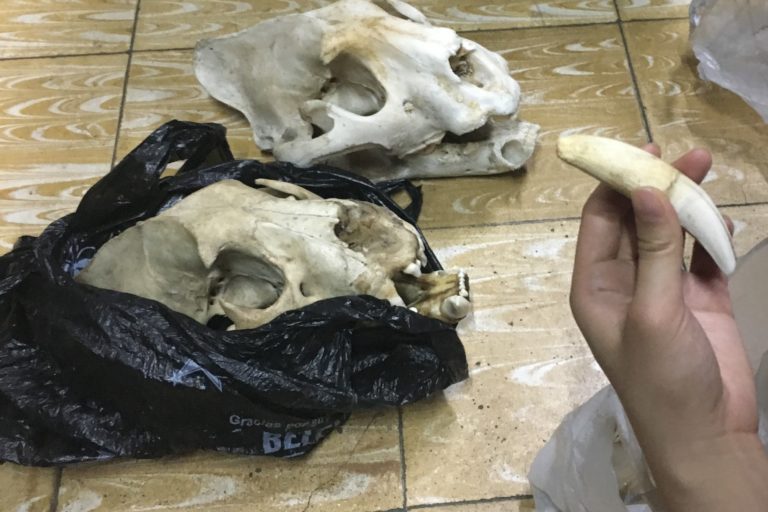
According to ELI, the “need for tiger parts,” combined with the possibility of replacing them with jaguar parts — in a country with a large number of jaguars — and the arrival of Chinese investments in Bolivia, have come together to create a “perfect storm.” Thaís Morcatty, a Brazilian researcher at Oxford Brookes University, published a study last year on the relationship between Chinese investment in infrastructure projects and jaguar trafficking. Morcatty notes that this pattern of looking for substitutes for tiger parts has already been seen in Africa, where lion populations have been reduced due to that demand.
The ELI report shows that Chinese-backed infrastructure projects are a gateway that enables the poaching of wildlife. It links an increase in poaching in Bolivia since 2015 to investor-friendly policies rolled out by then-president Evo Morales.
“Newly constructed roads are opening up the forest to poachers, while the influx of workers, specifically Chinese nationals, in infrastructure or mining industries, often creates new demand for bushmeat,” the report says. One of these roads is a highway being built through the middle of the Isiboro Sécure Indigenous Territory and National Park (TIPNIS) in the Amazon, straddling the departments of Beni and Cochabamba. Jaguars live in this protected area.
The ELI undercover agents found jaguar meat for sale in Santa Cruz, at two restaurants run by Chinese citizens that secretly offered various types of wildlife meat. “It is a new modality for the authorities,” says Herrera from the Bolivian environment ministry. “Since April 2020, we have published regulations through ministerial resolutions that prohibit, among other uses, the food and medicinal consumption of wildlife.”
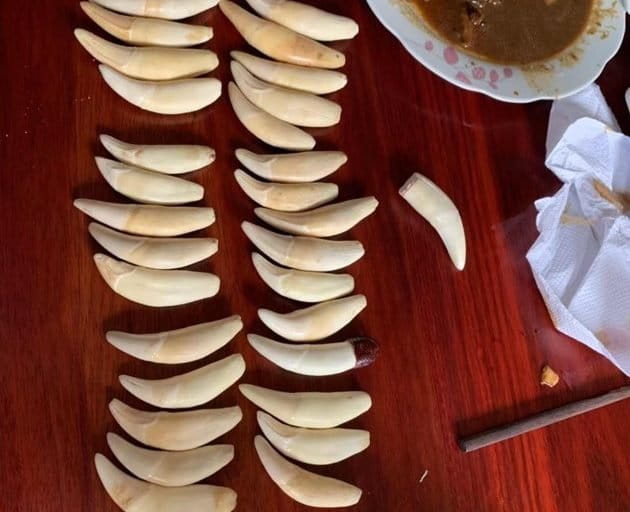
Despite this, jaguar meat isn’t of as much value to the traffickers as the other parts of the animal. “It is not interesting for traffickers because there is not much money behind it and it is occasional, sometimes by request,” Crosta says. “We have not found a relationship between the groups that traffic fangs and bones with the ones that trade meat.”
Go after the hunter or the dealer?
Crosta says it’s “very easy to go after the hunter, who is generally local, in this case, from Bolivia.”
“But he is the weakest link. Poaching exists because there is a trafficker who asks for the fangs,” he says. He adds that the focus of law enforcement efforts should be on trafficking, the part of the chain that is still invisible to the Bolivian authorities.
Between 2014 and 2016, authorities in Bolivia confiscated 760 jaguar fangs, corresponding to nearly 200 of the big cats. During that period, Bolivia’s postal service, Ecobol, found 337 of the fangs in 16 packages destined for Asia. The environment ministry has confirmed these figures collected by Operation Jaguar, a project developed by IUCN NL alongside Savia in Bolivia, with ELI leading the intelligence operations.
There have been 34 known cases of jaguar trafficking, both live and parts of the animal, as well as cases in which illegal hunting or smuggling of this feline was encouraged. Of these 34 cases, there have been criminal convictions in only five. In two of those cases, the perpetrators are serving a prison sentence of up to six years, the maximum penalty for this crime in Bolivia.

“All the cases that exist to date have been investigated because the Ministry of the Environment has reported them,” Herrera says. Both the environment and public ministries confirmed to Mongabay that since January 2019 there have been no new seizures of jaguar parts.
According to Herrera, the ministry is convinced that one of the shortcomings in the prevailing legal framework is the lack of a “modern punitive structure” that would set a deterrent effect for this type of crime. “That is why a draft bill was drawn up and sent to the Bolivian presidency,” he says. Mongabay reported last August that this initiative sought the creation of an Animal Protection Law, the first of its kind in the country. One of the proposed changes considers animal biocide, with a prescribed maximum sentence of 15 years in prison.
However, that proposal has been rejected for the time being. “We were told that the issue should be analyzed and reviewed by more [institutions],” Herrera says. “Now we are entering a new government and we hope that this initiative will be resumed.”
Ángela Núñez, a biologist who studies trafficking with Operation Jaguar, says it’s necessary to work on political continuity for this type of strategy. “The political crises in Bolivia are affecting the work to protect the jaguar,” she says.


Vania Arroyo, the director of environmental crimes in the Attorney General’s Office, agrees that discussions of the draft legislation should resume. “In the meantime, we want to suggest [considering] aggravating circumstances [in charges],” she says. “For example, if the animal is commercialized, but has also been killed or beheaded, the crime should have more jail time. For now, the sanction is minimal and it’s a joke.”
Arroyo’s office is relatively new. “It was created in mid-2019 and for now we have 11 specialized prosecutors who also oversee cases of juvenile delinquency and another 100 provincial prosecutors who must also support the investigations,” she says. The problems arise when these prosecutors do not receive or accept the complaints. “Sometimes they reject them because they don’t have enough training to accept these environmental cases. We are receiving advice from the International Fund for Animal Welfare [IFAW] to develop these skills.”
The dearth of legal action leaves those like Núñez, who studies the trade, with little to go on. “We have not yet been able to carry out more in-depth investigations into the reported cases of jaguar trafficking,” she says.
She says those arrested are only the people caught transporting the fangs or offering them for sale, while the rest of the players in the chain remain unknown — where they come from, and who they answer to. “To uncover this trafficking network we need to train prosecutors, judges and the police,” Núñez says. “We have to understand the magnitude of this threat.”

Even in cases where jaguar parts have been intercepted, there’s no indication justice is being pursued. “Those 300 fangs that were seized in 16 packages by the Bolivian postal service have no open cases and, what is worse, there is no official information on the whereabouts of these pieces,” the ELI report says. The Public Ministry has confirmed this.
Despite this bleak outlook for the jaguar in Bolivia, ELI and the Action Plan for Jaguar Conservation — a joint effort between public and private entities to establish a roadmap for the species’ protection in the country — have issued recommendations for action that can be taken. This includes improving coordination between the police, the autonomous departmental and municipal governments, the customs office, and the environment ministry. This way, they say, everybody will have a clear knowledge of their functions.
“It is also necessary to seek collaboration with the Chinese authorities in La Paz and involve Chinese communities and companies in Bolivia to work together against trafficking,” the ELI report says. With a new government headed by Luis Arce, of Morales’ Movement Toward Socialism (MAS) party, the Bolivian environmental path forward is fraught with uncertainty.
Banner image: Bolivian authorities have made several seizures, but have not been able to go after the Chinese syndicates. The main drawback is the language barrier. Image courtesy of IUCN NL.
Editor’s note: Mongabay receives funding from the IUCN National Committee of the Netherlands (IUCN NL) for this investigative series into the situation of jaguars in Latin America. We maintain full editorial autonomy, with news decisions made independently and not on the basis of donor support.
This article was first reported by Mongabay’s Latam team and published here on our Latam site on Jan. 27, 2021.










